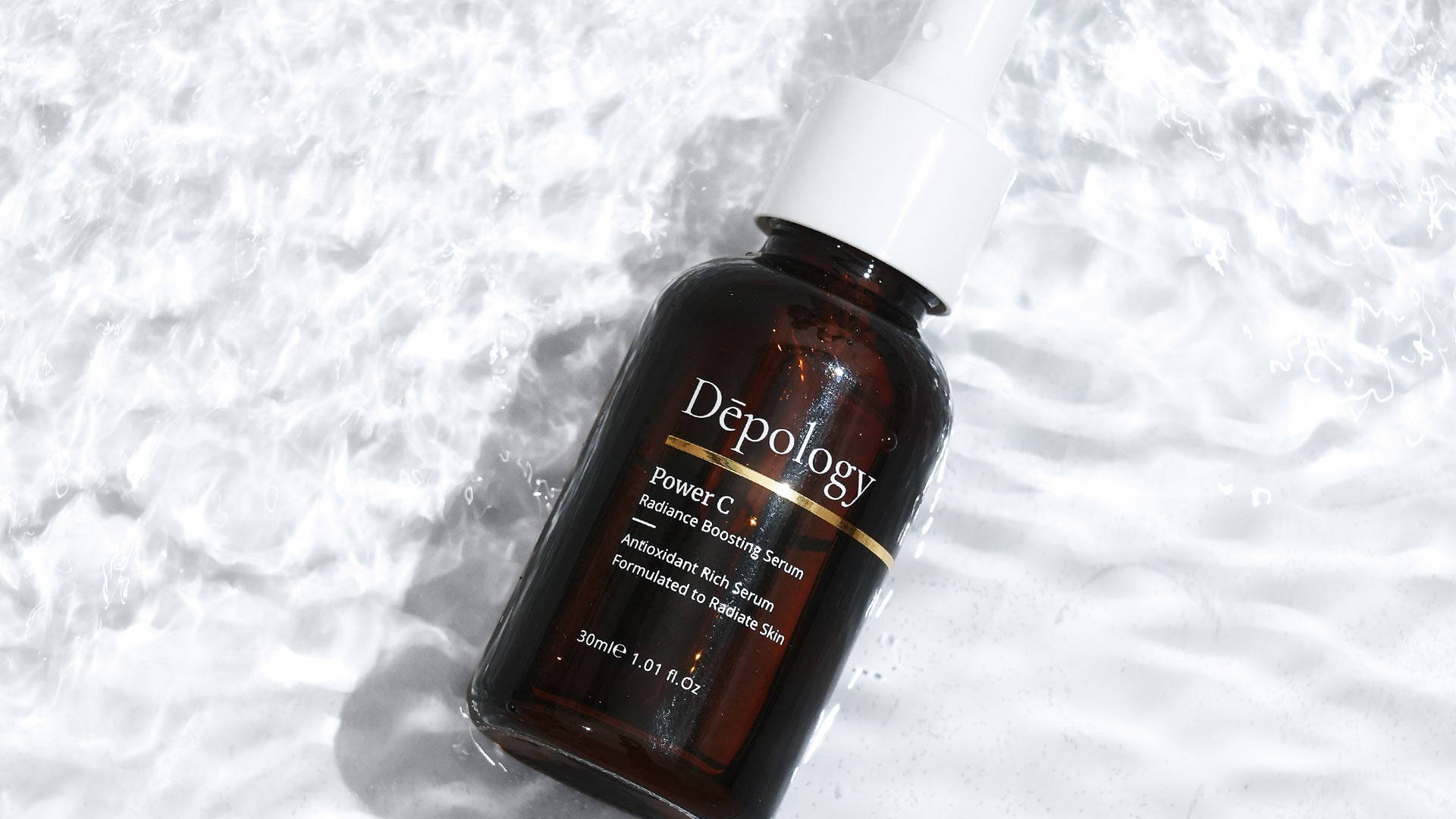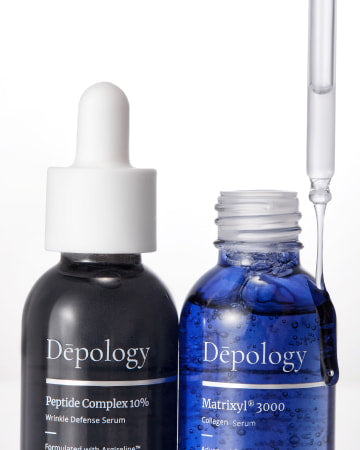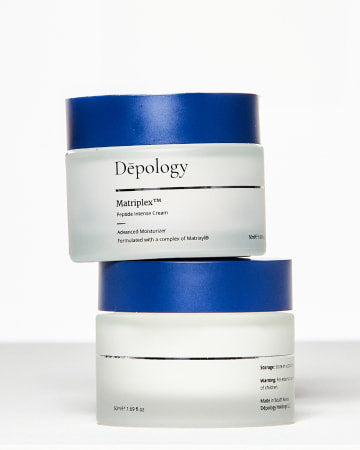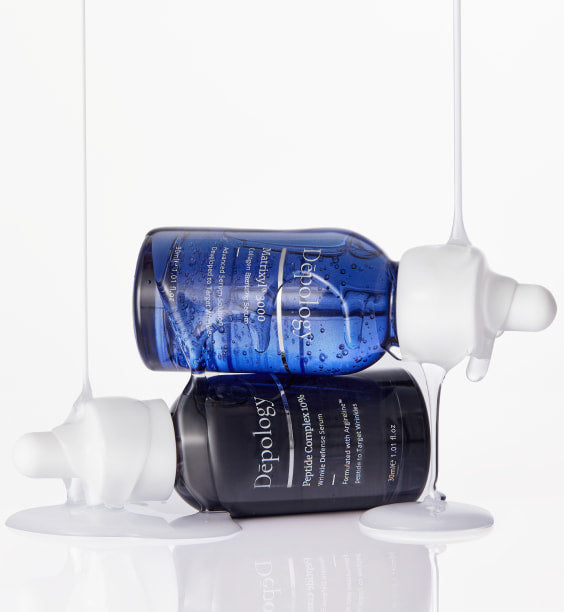
L-Ascorbic Acid vs. Ascorbic Acid
Having healthier, smoother, and brighter skin requires researching the various ingredients available in skin care products today so that you know the products actually work. Ascorbic acid and L-ascorbic acid are commonly listed ingredients, but many people are confused about the difference between the two or if there even is a difference. We'll cover this question and more to help you better understand common skincare ingredients.
Is L-Ascorbic Acid The Same As Ascorbic Acid?
When you see L-ascorbic acid and ascorbic acid listed as ingredients for skincare products, both of these terms refer to the same thing. Both are a type of Vitamin C with numerous skin benefits that we'll cover below. However, there is another type of ascorbic acid called D-ascorbic acid, which is a synthetic version. D-ascorbic acid is not biologically active and doesn't provide the same benefits as L-ascorbic acid, so any skincare product containing ascorbic acid refers to L-ascorbic acid.
Different Types Of Vitamin C
When shopping for skincare products, you may see "Vitamin C" listed as an ingredient. However, there are several different types of Vitamin C that offer unique benefits. Here are a few of the most popular types and how they can help your skin:
Ascorbic Acid
The purest form of Vitamin C is ascorbic acid, which helps reduce dark spots and brighten your skin for a more even tone. It helps boost collagen production for firmer, smoother skin to reduce the appearance of wrinkles and fine lines. It is also a powerful antioxidant that protects the skin from environmental damage and free radicals.
It is very potent but is also volatile and becomes less effective when exposed to the elements, so it is often stored in dark containers. It is water-soluble, so you can often find it in serums. Since it is so potent, it might be optimal for those with sensitive skin, and it is best to incorporate it into your skincare routine slowly.
Magnesium Ascorbyl Phosphate
Often referred to as MAP, Magnesium Ascorbyl Phosphate is a stable form of Vitamin C made from ascorbic acid and magnesium salt to make it more stable in water-based formulas. MAP is fat-soluble, so it can be dissolved in fats, allowing it to penetrate the oils in the skin. MAP helps stimulate collagen production and protect the skin from environmental stressors. It is anti-inflammatory, so it effectively reduces redness and soothes irritated skin, making it an excellent option for those with acne-prone skin.
Sodium Ascorbyl Phosphate
Sodium Ascorbyl Phosphate, or SAP, is a water-soluble Vitamin C derivative that is more stable yet less potent than ascorbic acid. It eventually converts to ascorbic acid in the skin but retains its potency better than ascorbic acid alone and is more gentle on the skin. Therefore, SAP is an excellent option for those with more sensitive skin. Like other forms of Vitamin C, SAP boosts collagen production, fights free radicals, and evens out skin tone.
Ascorbyl Palmitate
Ascorbyl palmitate is a fat-soluble form of Vitamin C that works in the same manner as L-ascorbic acid, although it is less potent. It is, however, gentler on the skin, so it is less likely to irritate or cause sensitivity. Ascorbyl Palmitate helps promote collagen production, reduce damage caused by UV rays, and reverse the effects of aging. It also helps fade hyperpigmentation, making it an ideal ingredient for those with uneven skin tone.
Ascorbyl Glucoside
Ascorbyl Glucoside is a water-soluble vitamin C derivative combined with glucose (sugar) that is more stable and gentler on the skin than ascorbic acid. It works by stimulating collagen production and helping to brighten skin tone for more radiant skin. Ascorbyl Glucoside also helps reduce free radicals in the skin, making it an excellent antioxidant. It can also help improve skin texture and make anti-aging products more effective. In addition, it is an effective anti-inflammatory ingredient, so it can help reduce acne inflammation and soothe irritated skin.
How To Incorporate Vitamin C Into Your Skincare Routine
When it comes to incorporating Vitamin C into your skincare routine, you first have to identify which ingredients work best for your skin's needs using our guide above. Once you've determined which form of Vitamin C you should use, developing a daily skincare routine is the next step. If your skin is sensitive, start by using Vitamin C products once every other day and gradually increase the frequency.
You can find products like moisturizers and creams containing low concentrations of Vitamin C, or you can use a serum with a higher concentration. Light, heat, and air quickly make Vitamin C ineffective, so storing products containing Vitamin C in a cool, dark place is recommended.
Our Pick:
Vitamin C shouldn't interact with certain ingredients like retinol, so we suggest using Vitamin C during your morning skincare routine and retinol during your evening routine. You also want to always use sunscreen with at least SPF 30 after applying Vitamin C and avoid prolonged sun exposure.
If you want a concentrated boost of Vitamin C, you can also opt for masks that contain it as an ingredient.
Our Pick:
The Final Verdict
From brightening dark spots and reducing inflammation to fading wrinkles and fighting free radicals, choosing the right form of Vitamin C for your skin type and incorporating it into your skincare routine can have an array of incredible benefits. While ascorbic acid and L-ascorbic acid may be the same, there are other types of Vitamin C that each have their own advantages. With this guide, you can now determine which form of Vitamin C is the most suitable for your skin type, so your complexion can look bright, glowing, and youthful.













